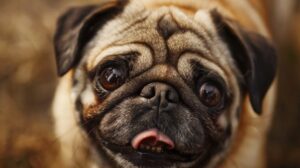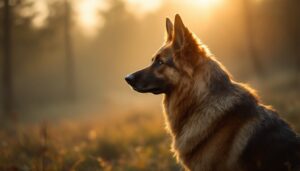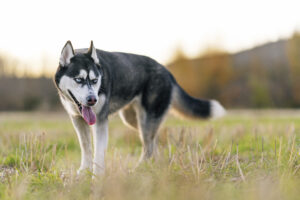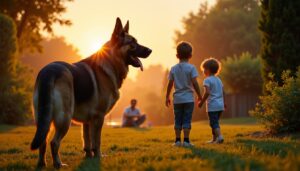Introduction
When exploring the fascinating world of canines, certain physical characteristics stand out as particularly charming—and few are more distinctive than curly tails. Dog breeds with curly tails have captivated dog lovers for centuries, with their elegant spiral appendages often becoming their signature trait. From the majestic Akita to the spirited Shiba Inu, these breeds showcase nature’s artistic flair through their uniquely coiled tails.
But before you fall in love with these curly-tailed companions, there’s crucial information every potential owner should know. While dogs with curly tails are undeniably adorable, these specialized breeds often come with specific needs, temperaments, and care requirements that might not suit every household.
In this comprehensive guide, we’ll explore the fascinating world of breeds of dogs with curly tails, examining everything from their evolutionary purpose to the specific challenges and joys they bring. We’ll highlight five popular dogs that have curly tails that require special consideration before bringing them home, ensuring you make an informed decision about these distinctive pets.
Whether you’re drawn to small dog breeds with curly tails or prefer big dogs with curly tails, understanding the unique aspects of these spiral-tailed companions is essential for responsible ownership. Let’s unravel the mysteries behind these captivating canines and discover what makes them both challenging and rewarding additions to the right families.
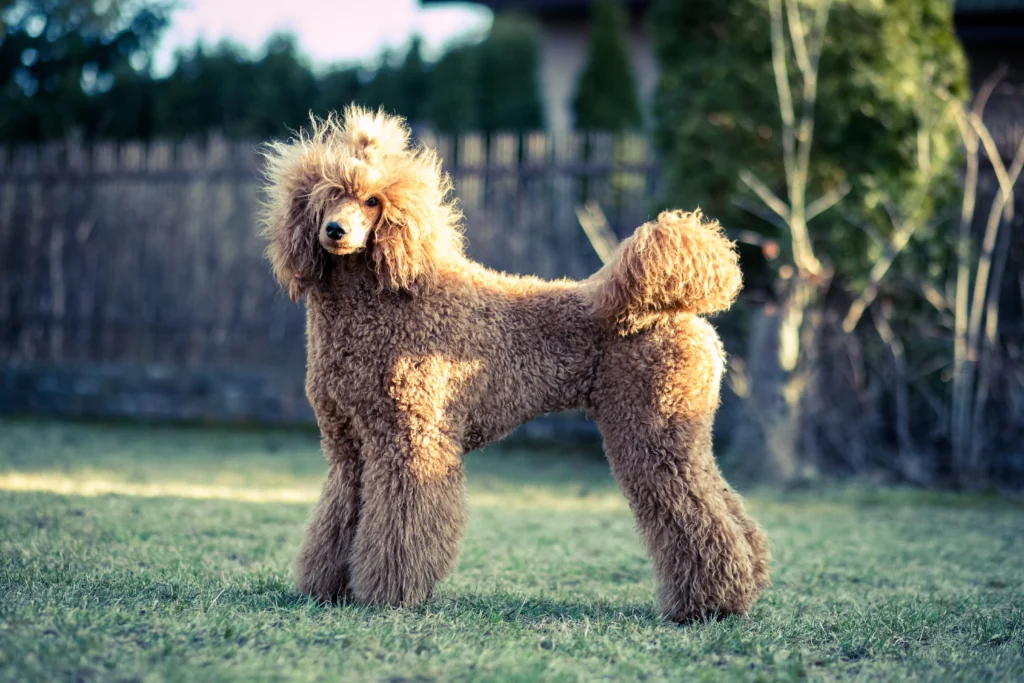
Understanding Curly Tails in Dogs: Evolution and Genetics
Before diving into specific dog breeds with curly tails, it’s important to understand why some dogs have curly tails in the first place. The distinctive curl isn’t just an aesthetic feature—it serves evolutionary purposes and has deep genetic roots.
The Evolutionary Purpose of Curly Tails
Curly tails in dogs aren’t merely decorative; they evolved for practical reasons, particularly in cold-weather environments. Many dog breeds with curled tails originated in arctic or sub-arctic regions, where the curled position served multiple functions:
- Heat conservation: When curled over the back, the tail can cover the nose and face, creating a natural warming system that protects these vulnerable areas from freezing temperatures.
- Snow protection: For Nordic dog breeds and other snow-dwelling canines, a tightly curled tail prevents snow accumulation on vital body parts.
- Body language signaling: The position and tightness of curl can communicate a dog’s emotional state to other pack members, serving as an important social signal.
For dogs with tightly curled tails, this feature represents thousands of years of adaptation to specific environmental conditions and social structures.
The Genetics Behind Curly Tails
The genetic factors controlling tail carriage in dogs with ring tails are complex and still being studied by canine researchers. What we do know is:
- Curly tails are typically dominant traits, meaning a dog needs only one copy of the gene to express the trait
- The degree of curl can vary significantly, from slight curves to double curled tail dog formations
- Many spitz dog breeds share common ancestry that contributes to their curly tail genetics
- While beautiful, extreme curl formations can sometimes be associated with vertebral anomalies
When examining dog tail types, the curl represents just one of many configurations, but it’s one that has become strongly associated with certain heritage breeds, particularly those from Asian and Northern European lineages.
For potential owners considering breeds of dogs with curly tails, understanding this genetic background provides valuable context for the unique physical and behavioral characteristics these dogs often exhibit.
Why Some Popular Curly Tail Dog Breeds Require Special Consideration
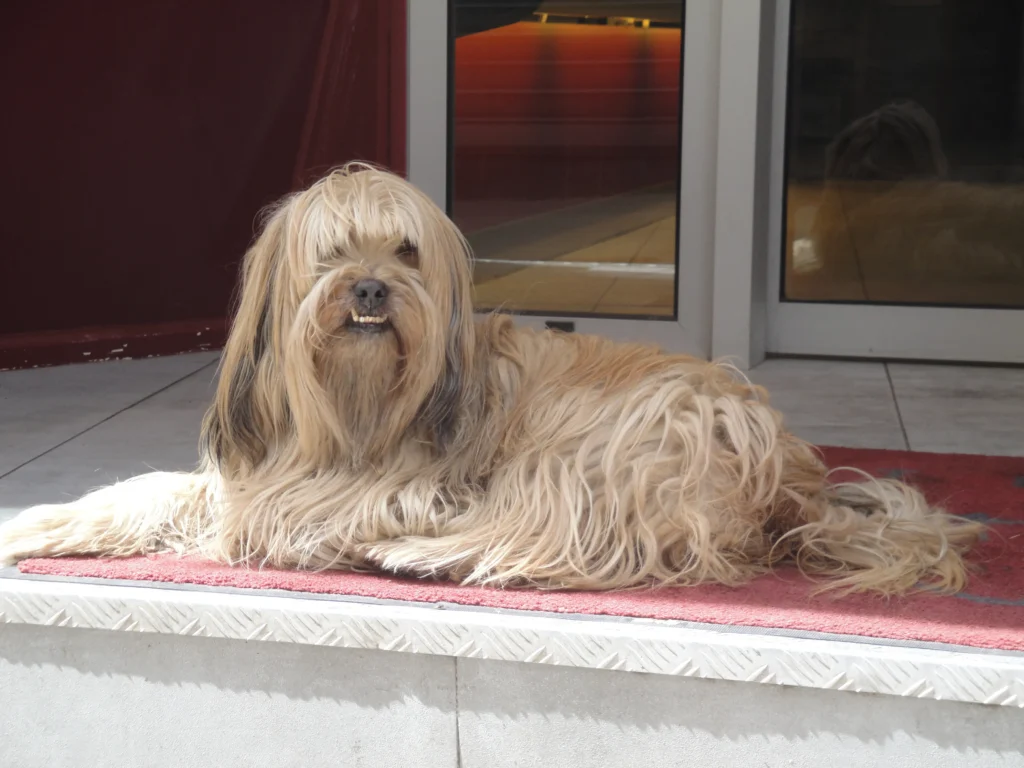
While many dog enthusiasts are drawn to the distinctive appearance of dog breeds with curly tails, these breeds often come with specific traits, temperaments, and care requirements that make them challenging for unprepared owners. Before diving into our list of five breeds that need special consideration, let’s explore some common characteristics shared by many dogs with curly tails that potential owners should be aware of:
Common Traits Among Dogs with Curly Tails
Popular curly tail dog breeds often share certain characteristics due to their common ancestry and development:
- Independent nature: Many dogs with curled up tails, particularly those from the spitz family, were bred for independent work like hunting or sledding, which translates to a sometimes stubborn, self-sufficient temperament.
- Double coats: Most fluffy dogs with curly tails have thick double coats that require consistent grooming and shed heavily during seasonal changes.
- Primitive instincts: Several curly tail dog breeds retain strong prey drives and territorial instincts that may require careful management.
- High energy levels: From the smallest Pomeranian to the largest Akita, many dogs that have curly tails were bred for active working roles and need appropriate physical and mental stimulation.
- Strong-willed personality: These breeds often exhibit determined, confident personalities that can challenge inexperienced owners.
According to a study published in the Journal of Veterinary Behavior, dogs with ancient origins—many of which have curly tails—often display more independent behavior patterns compared to breeds developed specifically for companionship. This independent streak can manifest as aloofness or apparent stubbornness when training.
Dr. Sarah Wilson, veterinary behaviorist at the American Canine Institute, notes: “While these spiral-tailed breeds are often exceptionally loyal to their families, many were never bred for blind obedience. They were selected for making independent decisions in harsh conditions, which can make them challenging for owners expecting immediate compliance.”
For those considering a dog from the comprehensive curly tail dog breeds list, understanding these common characteristics is crucial for setting realistic expectations and providing appropriate training and care.
5 Dog Breeds with Curly Tails That Need Special Consideration
Now let’s examine five specific dog breeds with curly tails that require careful consideration before bringing them home. These breeds are magnificent companions for the right owners but may present challenges for unprepared households.
1. Akita
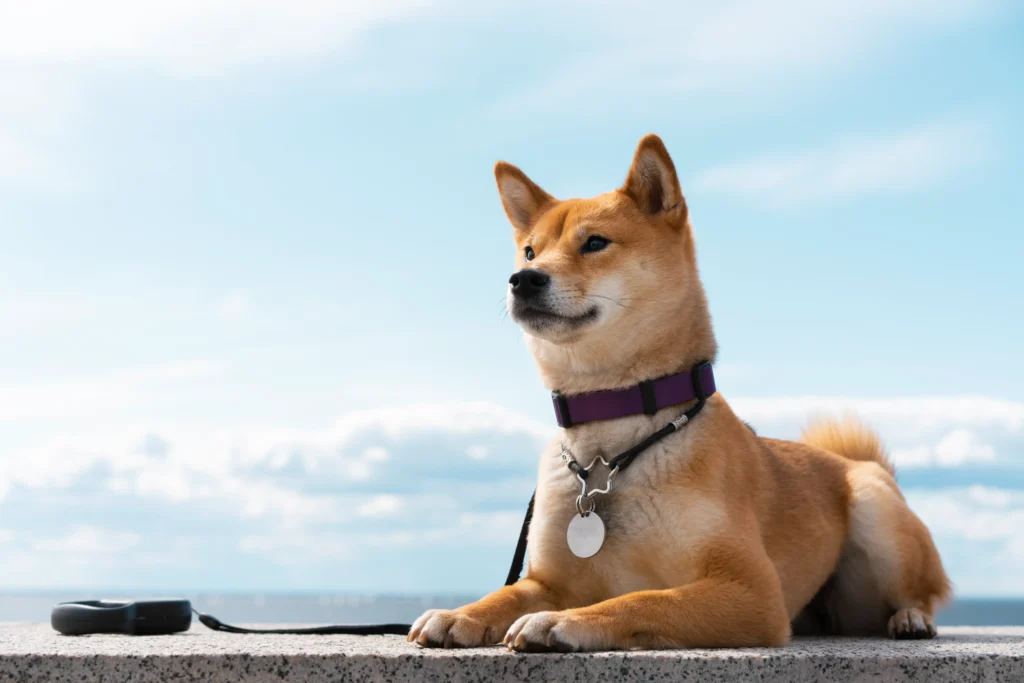
The majestic Akita is among the most impressive big dogs with curly tails, featuring a distinctive akita curly tail that curls tightly over their back. Originally from Japan, these powerful, dignified dogs require experienced handling.
Why special consideration is needed:
- Strong guardian instincts: Akitas are naturally protective and can be wary of strangers and other animals
- Significant strength: Weighing up to 130 pounds, they require an owner who can physically manage them
- Independent decision-making: Akitas were bred to hunt independently, making them sometimes resistant to commands
- Intensive grooming needs: Their thick double coat requires regular maintenance, especially during seasonal shedding
According to the American Kennel Club, Akitas “will be fiercely loyal to their families but aloof with strangers.” This breed requires early socialization and consistent, positive training methods to thrive in family environments.
For more information about caring for Akitas, check out our comprehensive guide to Japanese dog breeds on our website.
2. Shiba Inu

The Shiba Inu has gained immense popularity, with their fox-like appearance and characteristic shiba inu tail curled tightly over their back. As one of the most recognizable Japanese dog breeds with curly tails, Shibas pack a lot of personality into a medium-sized package.
Why special consideration is needed:
- Extreme independence: Often described as “cat-like,” Shibas have a notorious independent streak
- High prey drive: Their hunting heritage makes them prone to chasing smaller animals
- Escape artists: Many Shiba owners report their dogs’ remarkable ability to escape yards and homes
- Vocal tendencies: The “Shiba scream” is well-known among owners and can be startling to the unprepared
A study in the Journal of Veterinary Medical Science found that Shiba Inus ranked high among breeds showing owner-directed aggression and resource guarding behaviors, indicating the importance of proper training and socialization from puppyhood.
Their distinctive personality makes them endearing but challenging. For owners committed to understanding this ancient breed, Shibas offer unparalleled loyalty and character.
3. Chow Chow
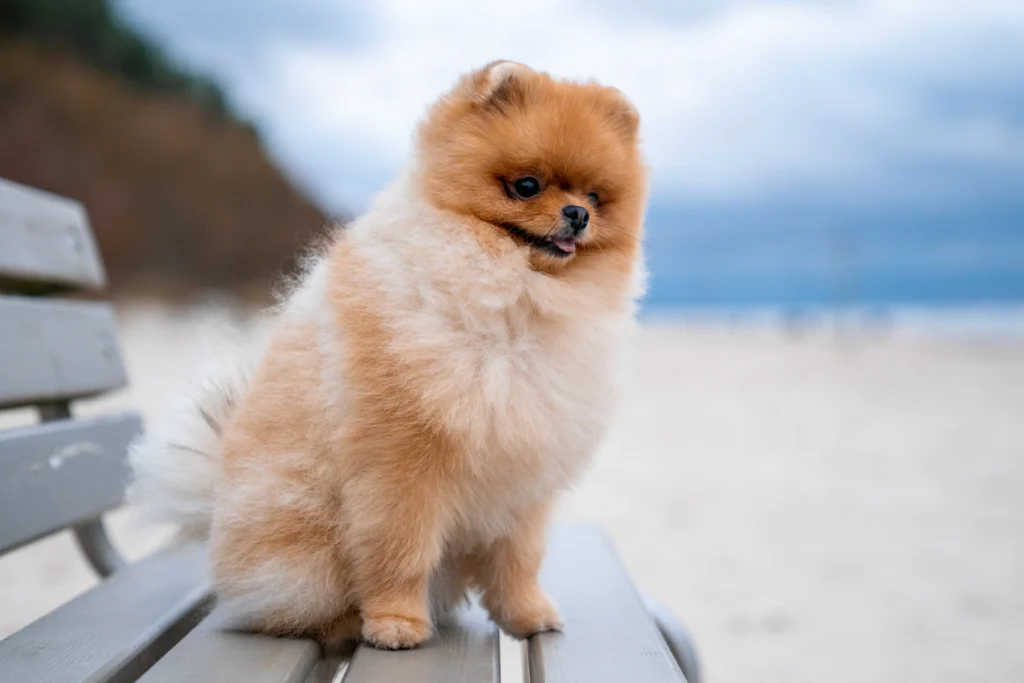
Among the most distinctive dog breeds with curled tails is the Chow Chow, known for their lion-like appearance and blue-black tongues. Their tails curl tightly over their backs, contributing to their bear-like silhouette.
Why special consideration is needed:
- Standoffish temperament: Chows are typically reserved with strangers and can be aloof even with family
- Challenging grooming needs: Their dense double coat requires professional-level grooming commitment
- Potential health concerns: The breed is prone to certain genetic issues including hip dysplasia and entropion
- Exercise requirements: Despite their somewhat sedentary appearance, Chows need regular exercise to maintain physical and mental health
According to veterinary behaviorist Dr. Karen Becker, “Chow Chows were bred for multiple working purposes in ancient China, including hunting, herding, and guarding. This multipurpose heritage contributes to their complex personality, which doesn’t always align with modern companion dog expectations.”
Chows can be wonderful, devoted companions but require owners who understand and respect their dignified, independent nature.
4. Finnish Spitz
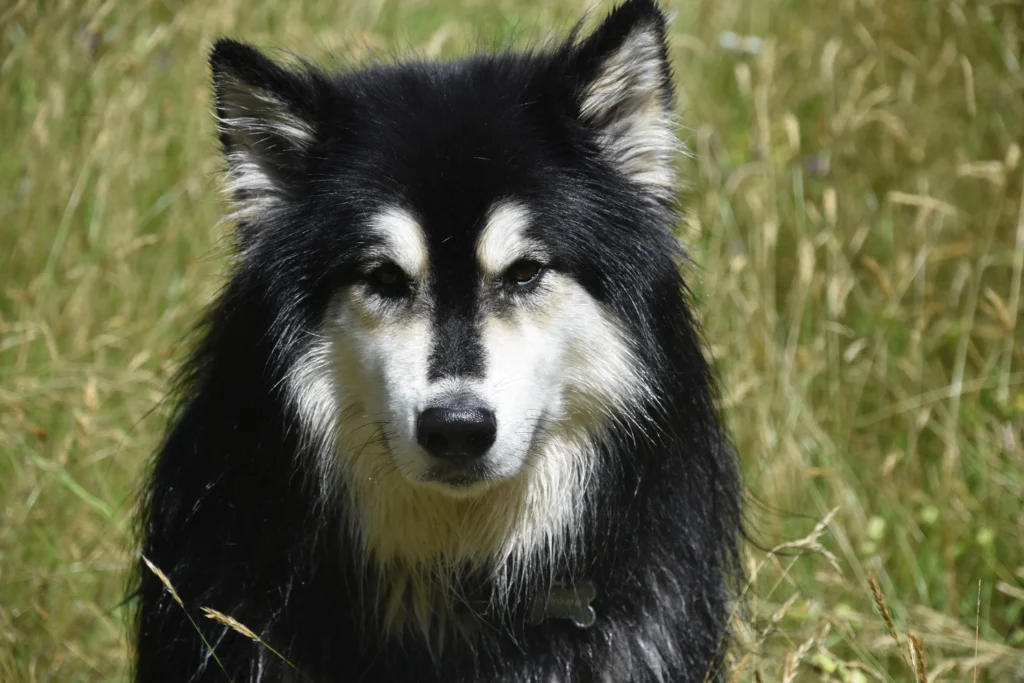
Less well-known than some other curly tail dog breeds, the Finnish Spitz represents one of the most vocal spitz dog breeds with their distinctive curled tail and fox-like appearance. These medium-sized dogs were bred as hunting companions in Finland.
Why special consideration is needed:
- Extreme vocalization: Finnish Spitz are known as “barking hunting dogs” and can be extraordinarily vocal
- High energy levels: They require significant exercise and mental stimulation daily
- Strong hunting instincts: Their prey drive makes them challenging around smaller pets
- Intelligence that demands engagement: Without proper mental challenges, they can become bored and destructive
The Finnish Kennel Club notes that these dogs can bark up to 160 times per minute when hunting, a trait that has been purposefully bred but can be problematic in suburban environments.
For active families who enjoy outdoor activities and can accommodate their vocal nature, Finnish Spitz can be joyful, energetic companions with their distinctive tails curled tightly over their backs.
5. Basenji
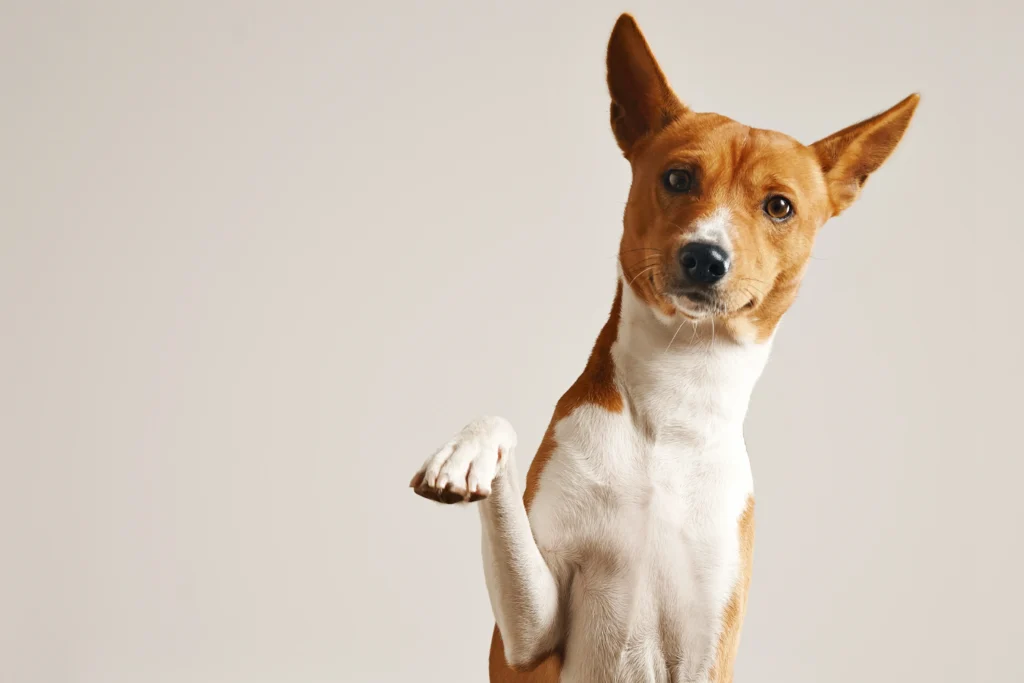
While technically having a tail that curls more into a tight coil rather than over the back like other dogs with ring tails, the Basenji deserves mention for its unique characteristics. Known as the “barkless dog,” these African hunting dogs communicate through an unusual yodel-like sound.
Why special consideration is needed:
- Extraordinary intelligence with stubborn streak: Basenjis are problem-solvers who often use their intelligence to pursue their own agenda
- High exercise needs: Despite their medium size, they require significant physical activity
- Escape tendencies: Their athletic ability and determination make secure fencing essential
- Unique grooming needs: While their short coat requires minimal brushing, they have cat-like grooming behaviors and can be sensitive to bathing
Research published in the Journal of Applied Animal Welfare Science indicates that Basenjis score lower on trainability measures than many other breeds, reflecting their independent nature rather than lack of intelligence.
For owners who appreciate a dog that challenges conventional canine behavior patterns and aren’t set on traditional obedience, the Basenji offers a fascinating companion with its distinctive curled tail and independent spirit.
Understanding Why Dogs Have Curly Tails: The Science Behind the Curl
Many dog lovers wonder why do dogs have curly tails, and the answer combines evolutionary biology, genetics, and selective breeding. The distinctive curl seen in many dog breeds with curly tails isn’t random—it serves specific purposes and has deep historical roots.
Anatomical Aspects of Curly Tails
The curl in a dog’s tail comes from the unique shape of the caudal vertebrae (tail bones) and how the muscles attach to them. In dogs with tightly curled tails, the vertebrae may actually form a spiral shape that facilitates the curl. This anatomical specialization is particularly evident in Nordic dog breeds and other ancient lineages.
Veterinary research has identified several key factors in tail carriage:
- The angle and flexibility of the coccygeal vertebrae
- Muscle tone and development along the tail
- Genetic factors that influence both bone structure and muscle attachment
- The presence of specialized tendons that facilitate the characteristic curl
For breeds of dogs with curly tails, these anatomical features combine to create their distinctive silhouette. In some cases, like with the double curled tail dog configuration seen in breeds like the Pug, the curl is so pronounced that the tail makes nearly two complete rotations.
Health Considerations Related to Curly Tails
While curly tails are generally natural features in specific breeds, extreme curl configurations can sometimes be associated with health concerns:
- Hemivertebrae: Some dog breeds with curled up tails have higher incidences of vertebral malformations, particularly in breeds with corkscrew tails like Pugs and Bulldogs.
- Skin fold infections: For breeds with very tight curls, the skin folds under the tail can trap moisture and debris, potentially leading to infections if not properly cleaned.
- Tail mobility issues: In extreme cases, overly tight curls can limit a dog’s ability to use their tail for balance and communication.
According to research published in the Veterinary Journal, “Breeders selecting for extremely curled tails should be aware of potential associated vertebral anomalies and monitor breeding stock for signs of spinal issues.”
For most natural dog breeds with curly tails like the Akita, Siberian Husky, or Shiba Inu, the curl represents a healthy adaptation rather than a concern. However, potential owners should research breed-specific health considerations related to tail structure when considering these distinctive dogs.
Small Dog Breeds with Curly Tails: Compact Companions
Not all dogs with curly tails are large working breeds. There are several delightful small dog breeds with curly tails that offer the distinctive curled tail in a more apartment-friendly package. These smaller breeds often maintain many of the spirited characteristics of their larger counterparts while being more manageable for urban living or families with limited space.
Popular Small Breeds with Curled Tails
- Pomeranian: These fluffy companions represent one of the most popular small dog breeds with curly tails. Their tail forms a characteristic plume that curls over their back, contributing to their fox-like appearance. Despite their small size, Pomeranians often display the confident, independent nature common to many spitz-type dogs.
- Pug: With their corkscrew tails and wrinkled faces, Pugs are instantly recognizable. Their tails typically form a tight curl over their hindquarters. Unlike many other dog breeds with curly tails, Pugs were bred specifically as companion animals rather than working dogs, making them generally more eager to please.
- Japanese Chin: These elegant little dogs feature a tail that curves gracefully over their back. As one of the ancient Japanese dog breeds with curly tails, they combine an independent spirit with an affectionate nature toward their families.
- Norwegian Lundehund: This rare breed features a unique ability to bend their head backward to touch their spine, along with a curled tail. Originally bred to hunt puffins on vertical cliffs, these small dogs require owners familiar with primitive breed characteristics.
- Tibetan Spaniel: Not actually a spaniel at all, these compact companions have a feathered tail that curls over their back. Their history as monastery dogs in Tibet has given them an alert, intelligent temperament.
Considerations for Small Curly-Tailed Breeds
While more manageable in size than their larger counterparts, small dog breeds with curly tails often share some common characteristics that potential owners should consider:
- Strong personalities: Many maintain the independent spirit of their larger relatives
- Exercise needs: Though smaller, many of these breeds still require regular activity to stay healthy and balanced
- Grooming requirements: Breeds like the Pomeranian need consistent coat maintenance despite their compact size
- Training importance: Small size doesn’t diminish the need for proper socialization and training
According to small animal veterinarian Dr. Jessica Martinez, “Many people underestimate the exercise and mental stimulation needs of small spitz-type dogs with curly tails. Just because they fit in a purse doesn’t mean they don’t need structured activity and training like larger breeds.”
For those seeking the distinctive appearance of dog breeds with curly tails but with space limitations or preference for smaller dogs, these compact companions can provide the characteristic curl in a more manageable package—provided owners still respect their unique needs and heritage.
For more information about caring for small dogs, check out our complete small dog care guide on our website.
Big Dogs with Curly Tails: Majestic Companions
For those drawn to larger canines, numerous big dogs with curly tails combine impressive size with the distinctive curled tail feature. These substantial breeds often trace their lineage to working roles that required strength, endurance, and independence—characteristics still evident in their temperaments today.
Notable Large Breeds with Curled Tails
- Alaskan Malamute: These powerful sled dogs feature a tail that curls over their back, particularly when alert or excited. As one of the oldest Arctic sled dogs, Malamutes combine strength with endurance and a distinctive wolf-like appearance enhanced by their curled tail.
- Eurasier: A more recent development combining Chow Chow, Wolfspitz, and Samoyed heritage, Eurasiers are medium-large dogs with magnificent plume tails that curl over their backs. Their balanced temperament makes them somewhat more adaptable than some other dog breeds with curly tails.
- Karelian Bear Dog: These fearless hunting dogs from Finland feature a curled tail and were traditionally used for hunting large game, including bears. Their high prey drive and independent nature make them challenging for inexperienced owners.
- Tibetan Mastiff: Among the most imposing dog breeds with curled tails, Tibetan Mastiffs can weigh well over 100 pounds. Their tail typically curls over their back, adding to their majestic appearance. Originally bred as guardian dogs for Tibetan monasteries and villages, they maintain strong protective instincts.
- Samoyed: While medium-large rather than giant, Samoyeds deserve mention for their spectacular white coats and distinctively curled tails. These friendly sled dogs combine working ability with a more sociable temperament than some other dogs with curly tails.
Living with Large Curly-Tailed Breeds
Owning big dogs with curly tails brings specific considerations beyond those of their smaller counterparts:
- Space requirements: Most large spitz-type and Nordic breeds need substantial living space
- Exercise demands: Regular, vigorous activity is essential for physical and mental health
- Training challenges: Their size makes proper training absolutely critical from puppyhood
- Financial commitment: From food to veterinary care, larger breeds generally involve greater expenses
Research published in Veterinary Medicine International indicates that many large northern breeds with curly tails mature slowly, often not reaching full mental maturity until 2-3 years of age—requiring extended patience during training compared to some other breed types.
Dr. Marcus Peterson, veterinary specialist in large breed health, advises: “Potential owners of large spitz-type dogs should be prepared for a significant exercise commitment. These breeds were developed for endurance work, and many behavior problems stem from insufficient physical and mental stimulation.”
For those with the space, resources, and lifestyle to accommodate them, big dogs with curly tails offer impressive companionship with distinctive appearance and often unwavering loyalty.
Fluffy Dogs with Curly Tails: The Ultimate Aesthetic Appeal
The combination of a luxurious coat and a curled tail creates some of the most visually striking canines in the dog world. Fluffy dogs with curly tails often become the center of attention, their plush coats and distinctive tail carriage creating an unmistakable silhouette. However, this appealing aesthetic comes with specific care requirements that potential owners should understand.
Beautiful Fluffy Breeds with Distinctive Tails
- Keeshond: These medium-sized spitz dogs feature incredibly thick double coats and a tail that curls tightly over their back. Their distinctive “spectacles” (facial markings) combined with their fluffy coat and curled tail make them immediately recognizable.
- American Eskimo Dog: Available in three size varieties (toy, miniature, and standard), these striking white dogs feature dense, stand-off coats and tails that curl over their backs. Originally performing as circus dogs, they combine intelligence with a trainable nature.
- Eurasian: Not to be confused with the Eurasier, this northern European spitz breed features a thick coat in various colors and a tightly curled tail. They combine the independence typical of dog breeds with curly tails with a generally calm home demeanor.
- Samoyed: Often called “smiling Sammies” due to their upturned mouth corners, Samoyeds feature spectacular white fluffy coats and tails that curl over their backs. Originally bred for herding reindeer and pulling sleds, they maintain an active, friendly temperament.
- Finnish Lapphund: These medium-sized herding dogs feature profuse coats and curled tails. Originally used by the Sami people for reindeer herding, they combine working ability with an affectionate family nature.
Grooming and Care Requirements
The magnificent appearance of fluffy dogs with curly tails comes with significant maintenance requirements:
- Regular brushing: Most require brushing several times weekly to prevent matting and manage shedding
- Seasonal blowing coat: Many spitz-type breeds “blow” their undercoat seasonally, creating dramatic shedding periods
- Temperature sensitivity: Despite their northern heritage, many thick-coated breeds can overheat in warm climates
- Tail area attention: The base of the curled tail requires specific grooming attention to prevent skin issues
Professional groomer Stephanie Chen notes: “Owners are often unprepared for the grooming commitment of spitz-type dogs with thick coats. During shedding season, daily brushing is often necessary, and the area under the curled tail needs special attention to prevent moisture-related skin problems.”
For those willing to invest in proper grooming equipment and regular maintenance, fluffy dogs with curly tails offer unparalleled aesthetic appeal combined with the distinctive personality traits common to these heritage breeds.
Japanese Dog Breeds with Curly Tails: Ancient Heritage
Japan has contributed several distinctive dog breeds with curly tails to the canine world, each carrying centuries of cultural significance and purpose-bred characteristics. These Japanese dog breeds with curly tails share certain traits while maintaining their unique identities, and all feature the characteristic curled tail that has become emblematic of ancient Asian breeds.
Notable Japanese Breeds and Their Characteristics
- Akita: As mentioned earlier, the Akita represents one of Japan’s most treasured native breeds. Their substantial size and dignified demeanor are complemented by their tightly curled akita curly tail. Available in both Japanese (Akita Inu) and American varieties, they maintain strong guardian instincts.
- Shiba Inu: Perhaps the most recognized Japanese breed internationally, the Shiba’s fox-like appearance is enhanced by their shiba inu tail that curls tightly over their back. As Japan’s smallest native breed, they pack considerable personality into a compact package.
- Hokkaido: Less well-known outside Japan, this medium-sized spitz breed features a curled tail and was developed for hunting bears on Japan’s northern island of the same name. Their strong prey drive and development for harsh conditions make them challenging for casual owners.
- Kai Ken: With their distinctive brindle coat and curled tail, Kai Ken were developed as hunting dogs in Japan’s mountainous regions. They maintain strong prey drive while being somewhat more trainable than some other Japanese breeds.
- Kishu Ken: These white hunting dogs feature the characteristic curled tail and were traditionally used for boar and deer hunting. Like other Japanese breeds, they combine independence with loyalty to their family.
Cultural Significance
Japanese dog breeds with curly tails carry deep cultural importance in their homeland:
- The Akita gained international fame through the story of Hachiko, the loyal dog who waited for his deceased owner for years
- Many Japanese breeds are designated as “Natural Monuments” by the Japanese government
- Traditional beliefs held that these dogs could ward off evil spirits and bring good fortune
- Their distinctive appearance has influenced Japanese art for centuries
Dr. Akiko Tanaka, canine historian specializing in Japanese breeds, explains: “The curled tail in Japanese breeds served both practical purposes in cold weather and became an aesthetic ideal that symbolized the spirit of these dogs—strong, independent, yet intimately connected to human society.”
For those interested in dogs with ancient lineage and distinctive appearance, Japanese dog breeds with curly tails offer fascinating companions with centuries of heritage. Their independence requires owners who appreciate rather than fight against their natural tendencies.
Spitz Dog Breeds: The Quintessential Curly Tail Family
Many of the most recognizable dog breeds with curly tails belong to the spitz family—a group characterized by their wolf-like appearance, thick double coats, pointed ears, and distinctively curled tails. These spitz dog breeds share common ancestry and adaptations to cold environments, though they’ve been developed for various working purposes around the Northern Hemisphere.
Characteristics of Spitz-Type Dogs
Spitz dog breeds typically share several key characteristics beyond their curly tails:
- Physical traits:
- Thick double coats with dense undercoat
- Pointed, erect ears
- Somewhat fox or wolf-like facial features
- Medium to thick muzzles
- Tails that curl tightly over the back
- Behavioral traits:
- Independent decision-making
- Strong territorial instincts
- High energy levels
- Natural suspicion of strangers
- Strong pack hierarchy awareness
Diverse Origins with Common Features
Spitz-type dogs with curly tails developed across the Northern Hemisphere, from Japan to Scandinavia, Russia to North America. Despite geographical separation, they evolved similar traits in response to similar environmental pressures:
- Arctic/Nordic spitz breeds: Including Siberian Husky, Alaskan Malamute, Samoyed, and numerous Scandinavian breeds
- Asian spitz breeds: Including Akita, Shiba Inu, Chow Chow, and other East Asian dogs
- European spitz breeds: Including Keeshond, German Spitz varieties, and Pomeranian
- Primitive/ancient spitz types: Including more primitive varieties like the Basenji and Canaan Dog
Dr. Stanley Coren, renowned canine psychologist, notes: “Spitz-type dogs represent some of our oldest domesticated breeds, often retaining primitive traits that made them successful working partners in harsh environments. Their independent nature reflects the need to make decisions without constant human direction in challenging conditions.”
For those considering spitz dog breeds, understanding their common heritage helps explain both their distinctive appearance—including those charming curly tails—and their sometimes challenging but always fascinating behavioral traits.
Why Do Dogs Have Curly Tails? Science and Evolution
The question of why do dogs have curly tails fascinates many canine enthusiasts. The characteristic curl seen in many breeds isn’t simply decorative but represents specific evolutionary adaptations and genetic expressions. Understanding the science behind tail carriage helps appreciate this distinctive feature of many beloved breeds.
Evolutionary Advantages
For dog breeds with curly tails, particularly those from cold climates, the curl provided several survival advantages:
- Cold weather protection: When tightly curled over the back, the tail can protect the face and nose—areas vulnerable to frostbite—while the dog rests. This adaptation was particularly valuable for breeds that developed in arctic and subarctic regions.
- Body heat conservation: A curled tail positioned over the back helps retain body heat by covering the thinner-furred areas around the abdomen and genital region.
- Snow and ice protection: The curled position keeps the tail elevated off the ground, preventing ice buildup and potential injury.
Research published in the Journal of Zoology suggests that tail carriage in canids (the family including wolves, dogs, and foxes) serves important thermoregulatory functions, with curl patterns helping conserve heat in cold environments.
Genetic Factors Behind Curly Tails
Modern genetic research has begun identifying specific genes that contribute to tail carriage in dogs:
- The T-box transcription factor gene has been identified as playing a role in tail shape and carriage
- Studies suggest curly tails are typically inherited as dominant or incompletely dominant traits
- Multiple genes likely interact to determine the specific degree and type of curl
Geneticist Dr. Elena Rodriguez explains: “The genetics of tail carriage are complex, involving multiple genes that influence both vertebral development and the muscles controlling tail position. What’s fascinating is how consistent the trait remains within certain lineages, suggesting strong selective pressure maintained these genes throughout domestication.”
For dogs with tightly curled tails, the curl represents an intersection of practical adaptation, genetic expression, and eventual human preference through selective breeding. What began as a survival adaptation became an identifying characteristic of many beloved breeds.
Choosing the Right Curly-Tailed Companion for Your Lifestyle
While dog breeds with curly tails are undeniably charming, finding the right match for your lifestyle is essential for a successful relationship. Before falling in love with a curled tail, consider these important factors to ensure the breed’s characteristics align with your home environment, experience level, and expectations.
Lifestyle Compatibility Factors
When considering breeds of dogs with curly tails, evaluate these key aspects:
- Activity level: Many spitz-type and northern breeds require substantial daily exercise. Be honest about your activity level and whether you can meet a high-energy dog’s needs.
- Living space: While some small dog breeds with curly tails can adapt to apartment living, many larger varieties need substantial space. Consider your home’s size and outdoor access.
- Climate considerations: Breeds developed for cold environments may struggle in hot climates without appropriate accommodations like air conditioning and limited outdoor time during heat waves.
- Grooming commitment: Most fluffy dogs with curly tails require regular grooming to maintain coat health. Assess whether you have the time, skills, or budget for professional grooming.
- Training experience: Many popular curly tail dog breeds have independent natures that challenge inexperienced owners. Consider your training background and willingness to work with a potentially stubborn dog.
Finding Your Perfect Match
Instead of focusing solely on appearance, consider these strategies for finding the right curly-tailed companion:
- Meet adult dogs: Puppies are universally cute but visiting adult dogs of the breed you’re considering provides better insight into their mature temperament and size.
- Speak with breed-specific rescues: These organizations understand their breed’s unique needs and can provide honest assessments of whether a particular dog would fit your lifestyle.
- Consider similar-looking alternatives: If you love the appearance of Akitas but recognize their challenging aspects, breeds like the Eurasier or Keeshond might provide similar aesthetics with more beginner-friendly temperaments.
- Prioritize temperament over appearance: While the curly tail might be your initial attraction, compatibility with your lifestyle should ultimately guide your decision.
According to certified dog trainer Michelle Thompson: “I often see people fall in love with the distinctive appearance of spitz-type dogs, only to struggle with their independent nature. Taking time to honestly assess whether your lifestyle and experience level match a breed’s needs is the most important step in finding a successful match—curly tail or not.”
By carefully considering these factors, you can find a dog breed with a curly tail that brings joy rather than frustration to your household.
Training and Socialization Tips for Curly-Tailed Breeds
Many dog breeds with curly tails, particularly those from spitz and ancient lineages, present unique training challenges due to their independent nature and strong instincts. Understanding effective approaches to training and socialization can help build a positive relationship with these distinctive dogs.
Effective Training Approaches
When working with dogs with curly tails that have independent temperaments, consider these specialized approaches:
- Motivation-based training: Rather than expecting automatic obedience, focus on finding what genuinely motivates your dog—whether food rewards, play opportunities, or access to preferred activities.
- Consistency with flexibility: Maintain consistent expectations while recognizing that many of these breeds respond poorly to repetitive drilling. Keep training sessions varied and engaging.
- Positive reinforcement: Harsh corrections typically backfire with independent breeds, creating resistance rather than cooperation. Focus on rewarding desired behaviors rather than punishing unwanted ones.
- Problem-solving opportunities: Many dogs with curled tails enjoy mental challenges. Training that incorporates puzzle-solving can engage their intelligence in productive ways.
- Respect for instincts: Acknowledge and work with natural instincts rather than against them. For example, channeling prey drive into appropriate games rather than trying to eliminate it entirely.
Certified dog behaviorist James Wilson suggests: “With spitz-type breeds, it’s essential to frame training as a partnership rather than a dominance relationship. These dogs respond to being treated as thinking partners rather than subordinates expected to obey without question.”
Critical Socialization Windows
For dog breeds with curly tails that tend toward aloofness or suspicion, early and appropriate socialization is particularly crucial:
- Puppy socialization (8-16 weeks): This critical period shapes a puppy’s lifelong attitudes



